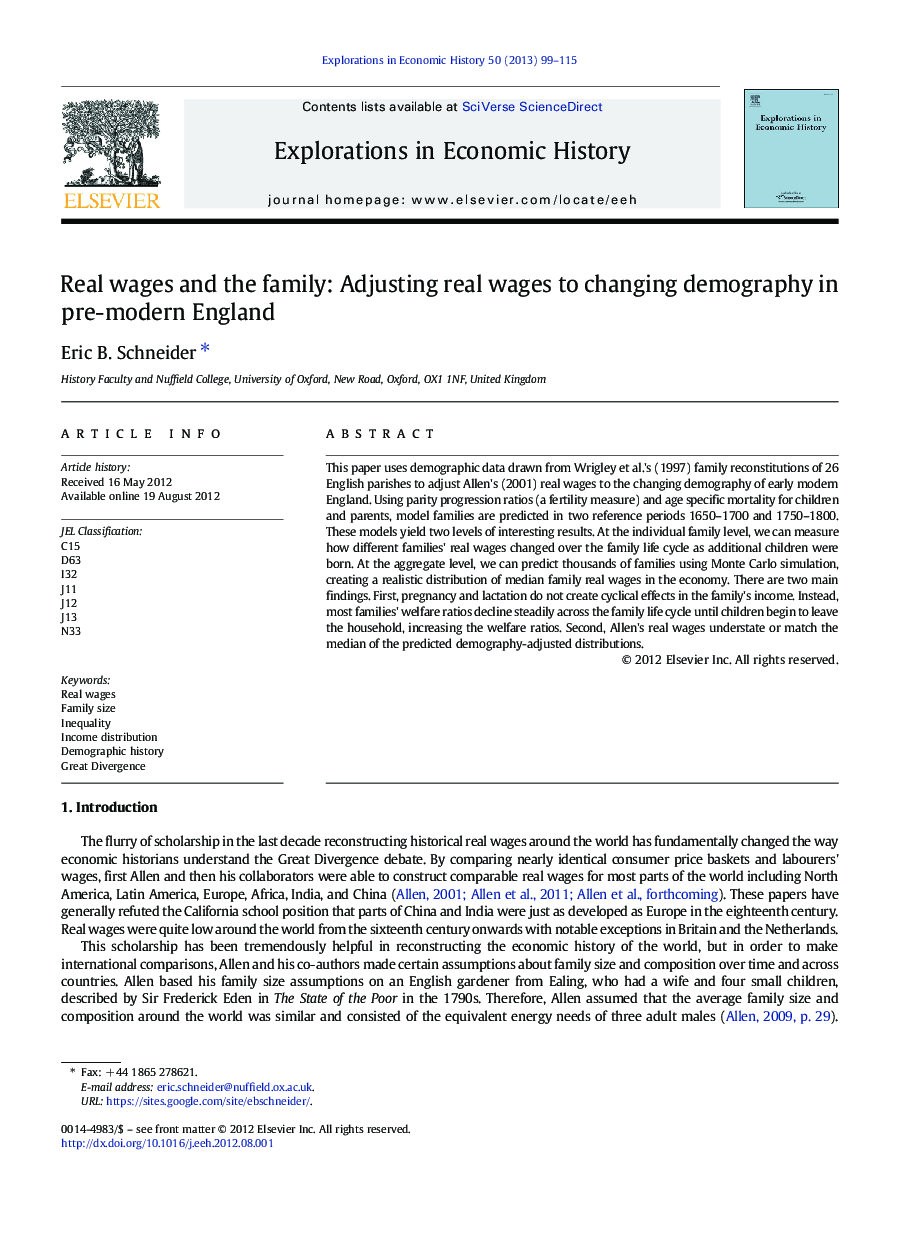| Article ID | Journal | Published Year | Pages | File Type |
|---|---|---|---|---|
| 5068957 | Explorations in Economic History | 2013 | 17 Pages |
This paper uses demographic data drawn from Wrigley et al.'s (1997) family reconstitutions of 26 English parishes to adjust Allen's (2001) real wages to the changing demography of early modern England. Using parity progression ratios (a fertility measure) and age specific mortality for children and parents, model families are predicted in two reference periods 1650-1700 and 1750-1800. These models yield two levels of interesting results. At the individual family level, we can measure how different families' real wages changed over the family life cycle as additional children were born. At the aggregate level, we can predict thousands of families using Monte Carlo simulation, creating a realistic distribution of median family real wages in the economy. There are two main findings. First, pregnancy and lactation do not create cyclical effects in the family's income. Instead, most families' welfare ratios decline steadily across the family life cycle until children begin to leave the household, increasing the welfare ratios. Second, Allen's real wages understate or match the median of the predicted demography-adjusted distributions.
